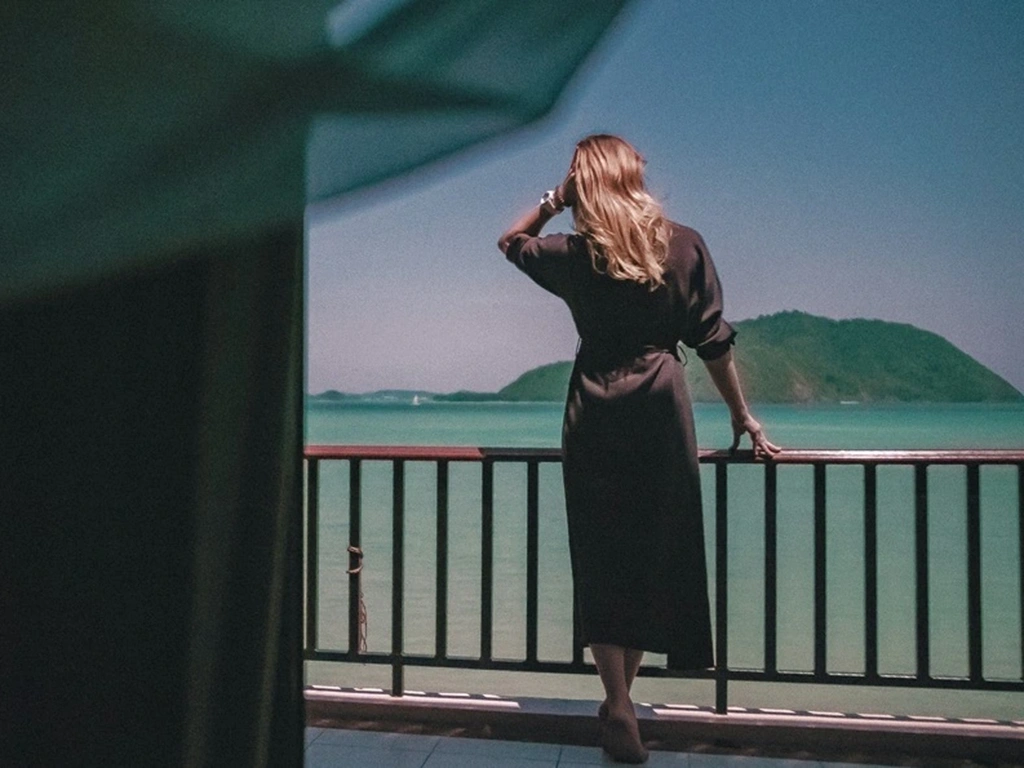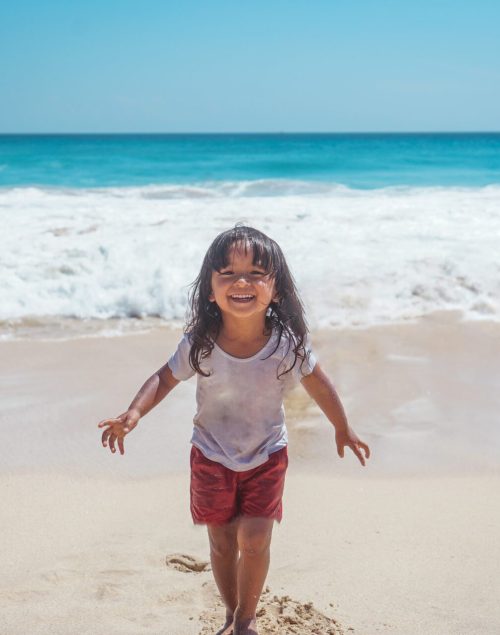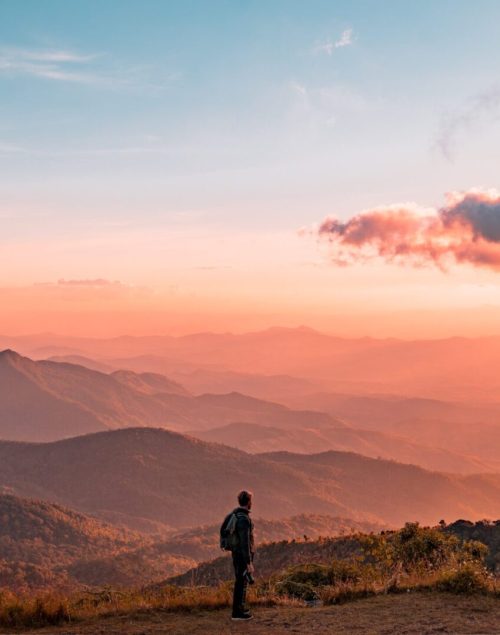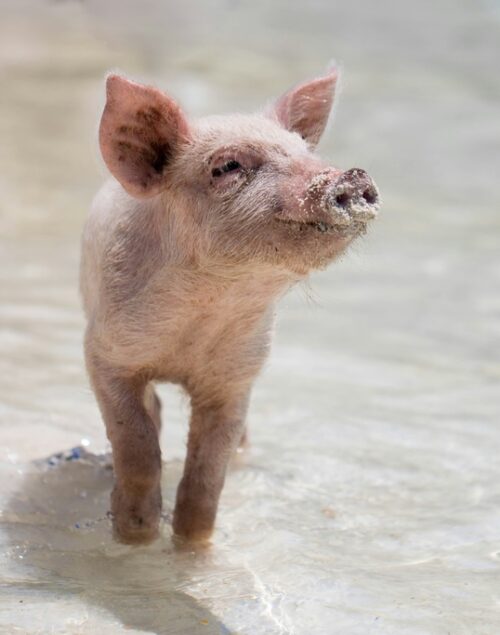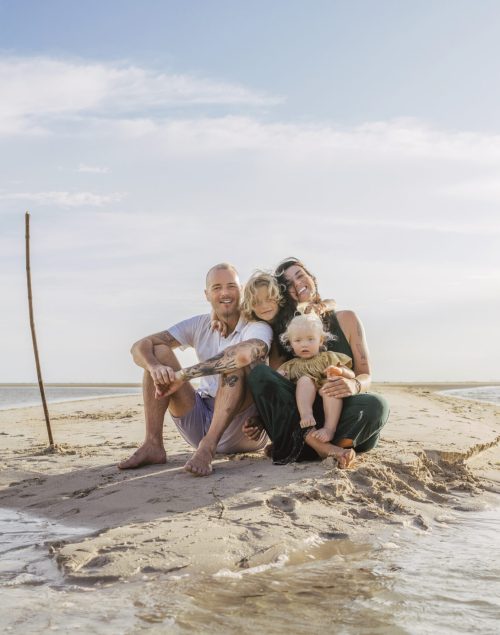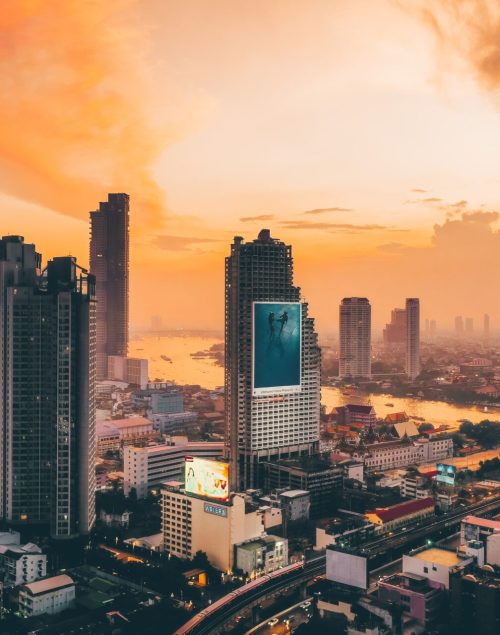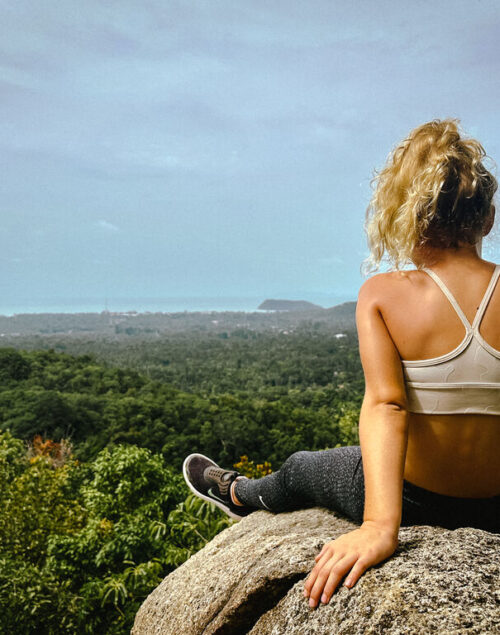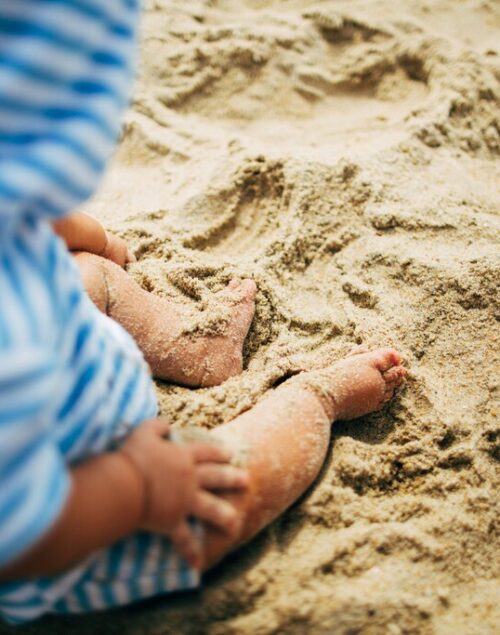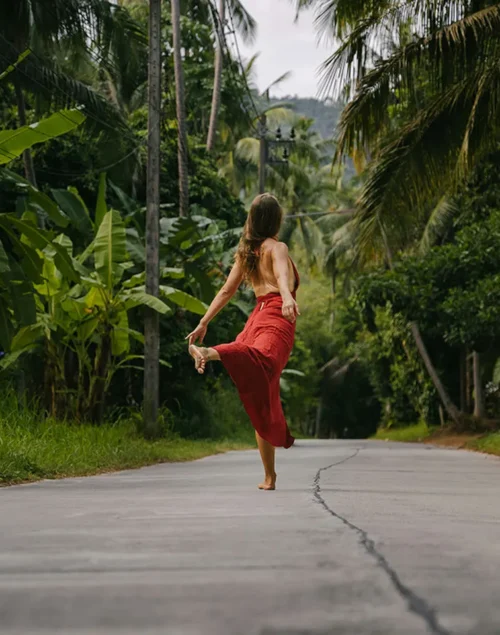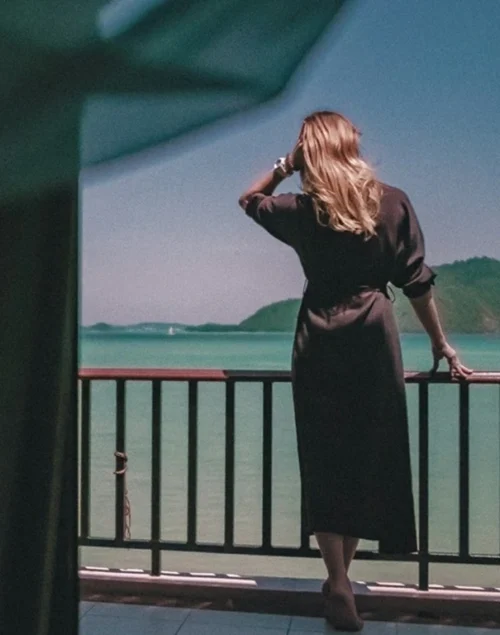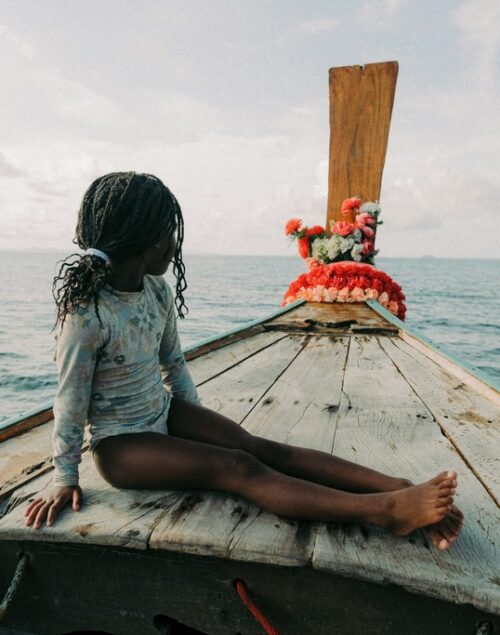One of the questions I get asked the most is: What to wear in Thailand? And I totally get it—there’s a lot to think about here! From the intense heat and sudden downpours to cultural and religious etiquette, dressing right can be a bit tricky.
We’ve been living in Thailand since 2019, so by now, we’ve become pretty good at choosing the perfect, weather-appropriate outfits.
In this article, I’ll share what to wear in Thailand for every season, must-have items for your suitcase, and what to skip to avoid embarrassing (or sweltering) moments.
Understanding Thailand’s Climate
To know what to wear in Thailand, you first should understand Thailand’s climate. Thailand has three main seasons: hot, rainy, and cool. The hot season, from March to June, can hit temperatures up to 40°C (104°F), especially in Bangkok.
The rainy season, usually from July to November, varies by location. For example, islands in the Gulf of Thailand, like Koh Samui, get their rainy season later, around October to November, while places along the Andaman Sea and in the north, like Chiang Mai, typically see the rain end by October.
Then there’s the cool season, from November to February, which brings comfortable weather, usually between 20-30°C (68-86°F). The islands stay warm all year, while northern areas like Chiang Mai can drop below 15°C (59°F) in the evenings.
Cultural Etiquette and Dress Code
Thailand has two sides when it comes to dress code. On one hand, cultural norms place a high value on modesty, which is especially important when visiting temples, royal sites, and rural areas. Thai people appreciate respectful attire. In temples and sacred sites, visitors are expected to wear clothing that fully covers shoulders, long pants or skirts.
On the other hand, Thailand also has a modern, youthful side, seen in the open party culture and its LGBTQ+ friendliness. It’s common, for instance, to see ladyboys or women in the entertainment business dressed in flashy, revealing outfits to attract customers. There’s no stigma against it—it’s simply something younger Thais do and accept.
When it comes to beaches and pools, however, Thais are generally more reserved. It’s rare to see locals in bikinis; they typically wear long-sleeved swimsuits with shorts over them. In tourist areas, though, it’s normal for visitors to be more casual, even walking around in beachwear at the beach or in their hotel. Depending on the area, you might even see beachwear in bars or casual restaurants.
But even here, there are unspoken rules. While Thais are far too polite to say anything, it’s not considered appropriate to walk into a 7-Eleven, supermarket, or massage parlor in just a bikini. Dressing a bit more modestly away from the coast, especially when interacting with locals, is simply respectful. That makes sense, right? But trust me, I’ve seen all sorts of disrespectful behavior here and am constantly surprised at how some people choose to act.
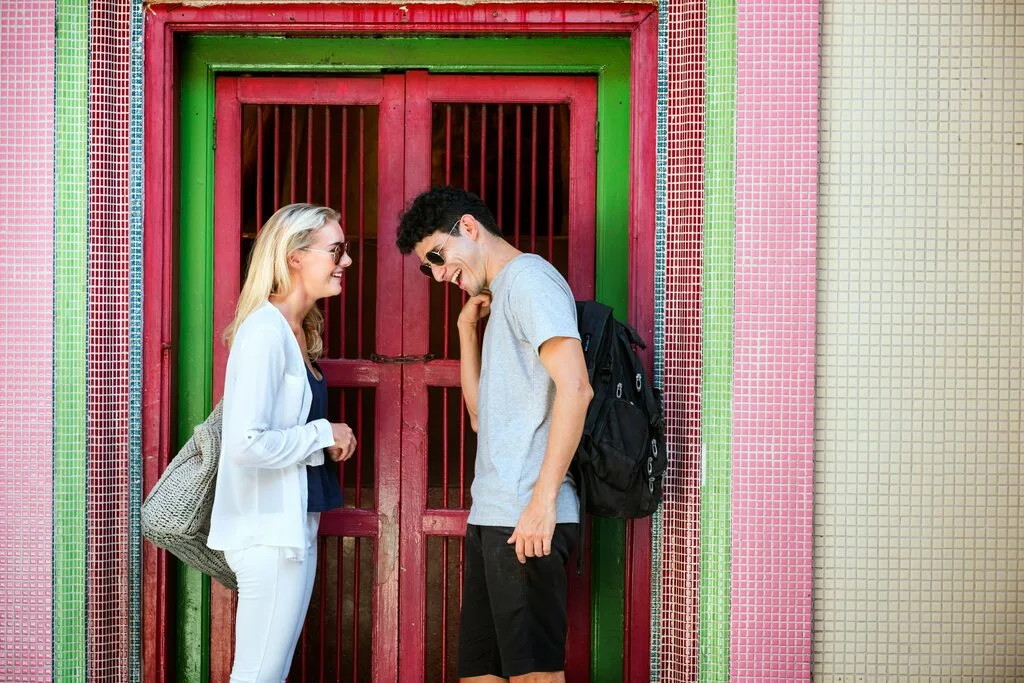
10 Do’s: What to Wear in Thailand
- Wear Light, Breathable Fabrics
Thailand’s tropical climate can be very humid, so go for fabrics that allow your skin to breathe. Cotton, linen, and bamboo are great choices to keep cool and comfy all day. Personally, I love elastic yoga clothes made from polyester blends. They’re super comfy, dry quickly, and are perfect for handling the heat and sudden rain showers. - Pack Loose-Fitting Clothes
Loose, flowy clothes are essentials for any Thailand wardrobe. Breezy dresses, airy skirts, and relaxed harem pants give you plenty of ventilation and freedom to move. I always wear long pants when exploring nature here—it keeps the mosquitoes at bay too! - Bring Modest Clothing for Temples
As mentioned, modesty is highly valued in Thailand, especially in temples. Always cover your shoulders and knees in these sacred places. That doesn’t mean sacrificing style—long skirts or pants and loose tops with sleeves are comfortable and respectful. At popular tourist spots, you’ll often find stands renting out kimonos or sarongs at the entrance—sometimes for free or a small fee. - Choose Quick-Dry Clothing
With the chance of sudden showers, especially in the rainy season from July to November, quick-dry clothing is a must. Polyester blends or travel fabrics dry faster than cotton, making them ideal for island trips or water activities. As I mentioned, I adore my yoga/activewear—comfy and practical! - Opt for Sandals and Flip-Flops
Easy-to-slip-on shoes are essential in Thailand. You’ll need to remove them in temples, most shops, and homes. Sandals and flip-flops make it easy to respect this custom and keep your feet cool on hot days. I recommend going for plastic ones—they’re beach, city, and rain-proof, easy to wash, and quick to dry. - Bring a Lightweight Rain Jacket or Poncho
A lightweight rain jacket or compact poncho is a lifesaver during the rainy season. Carry one in a small bag, ready to slip on if rain starts. Ponchos are popular because they keep both you and your belongings dry without overheating you. Simple ponchos are available in every 7-Eleven, though they often don’t last long. If you’re visiting during rainy season, a high-quality jacket or poncho from home is worth the investment! - Carry a Scarf or Shawl
A lightweight scarf or shawl is incredibly versatile here. Use it to cover your shoulders at temples, as a sarong at the beach, or for sun protection when the sun is strong. It’s also handy as a blanket on chilly buses, trains, or cinemas. My husband recently became a fan of Thai silk scarves. You can find beautiful, high-quality ones in tourist shops for about 150 THB (around $4). They’re perfect for covering up or staying warm. - Choose Comfortable Walking Shoes
Exploring Thailand involves a lot of walking through markets, temples, and nature trails. Comfortable walking shoes or sturdy sandals will keep your feet happy. Look for good arch support, especially if you’re hiking or walking a lot. If you’re planning active adventures, pack breathable sport shoes with grip. I love my trail-running shoes from Decathlon! - Pack Swimwear for the Beach
Swimwear is essential if you’re hitting Thailand’s stunning beaches (there are even a few unofficial nude beaches in Koh Phangan). For kids, I recommend long-sleeve swimsuits with UV-protective fabric—it really eases the worry about sunburn on their shoulders and back. Hats are highly recommended for both kids and adults! - Embrace Thai Fashion
Thailand has a unique, laid-back style that many travelers fall for. Support the local markets and pick up traditional Thai clothes like sarongs, fisherman pants, or loose tops made from local fabrics. These pieces are perfect for the climate and make fantastic souvenirs. I’ll admit, during my first trip, I was all about those iconic elephant pants and Chang beer T-shirts. These days, I’m not so into the look, but hey, taste is personal!

10 Don’ts: What Not to Wear in Thailand
- Don’t Wear Revealing Clothing
Avoid low-cut tops, short shorts, and see-through clothes, especially in non-tourist areas. On islands like Koh Phangan or Koh Samui, a crop top or short shorts are fine for beach restaurants, but in places like Chiang Mai’s Old City or Bangkok’s business districts, it’s not appropriate. Covering up more than you might at home shows respect for local customs and keeps you from drawing unwanted attention. Like I said, Thais won’t say anything, but sometimes you can just tell what they’re thinking, right? - Don’t Wear Heavy or Thick Fabrics
Denim, wool, or thick synthetics trap heat and feel uncomfortable in Thailand’s tropical climate. Choose lighter fabrics that breathe well. Trust me, I once bought a beautiful kimono with golden beads—never wore it because it’s just too heavy and hot. Lesson learned! - Don’t Go Barefoot Outside Temples or Homes
It’s Thai custom to remove shoes when entering temples, homes, and some businesses. Going barefoot outside these places is uncomfortable and can seem disrespectful. Unfortunately, I see a lot of “wannabe hippies” walking around barefoot, spreading dirt everywhere. Let’s lead by example and keep things respectful! - Don’t Wear Beachwear in Cities
Swimsuits and bikinis belong on the beach, not city streets, restaurants, or massage parlors. Always bring a light cover-up for excursions away from the beach. I love just wrapping a light scarf around me or throwing on a short-sleeve kimono. - Don’t Forget a Hat or Sunglasses
Hats and sunglasses are essential for sun protection in Thailand’s intense sunlight, especially during midday. Remember to remove hats indoors, especially in temples, where keeping your head uncovered is respectful. - Don’t Ignore Local Norms in Rural Areas
Modest dress is a must in rural areas, villages, and local markets, where customs are more conservative. Covering your shoulders and knees is respectful and leaves a good impression. I especially noticed this in Chiang Mai and Chiang Rai—tourists in beach outfits stand out like a sore thumb here. - Don’t Overpack Formal Wear
Thailand’s casual vibe means you rarely need formal clothes, except for a few upscale places in the cities or when fine dining. Even then, smart-casual is usually fine. Save suitcase space by packing versatile outfits instead of fancy clothes that might go unused. And if you need something nicer, a Thai tailor can make you a custom suit or dress at a great price! - Don’t Assume Western Standards Apply
Thai fashion is quite unique—kind of a mix of conservative and flashy. Thai women love pearl tops and sparkly shoes, but they’re also covered up, often in long, flowy dresses. Thai men might wear big gold watches to show off wealth. What’s typical back home can look a bit odd in Thailand. Even my beloved and practical Birkenstocks are seen as too casual for some restaurants. What a shame! - Don’t Wear Dirty or Ripped Clothes
Clean, tidy clothes are highly valued in Thai culture, so wearing anything dirty, worn, or ripped can seem careless. Even on a budget, looking neat shows respect, which locals appreciate. I’ve had Thai friends wonder why some wealthy Western tourists “let themselves go” and look like they’re homeless. It’s worth the little effort to keep things neat! - Don’t Overdo Jewelry or Flashy Accessories
You shouldn’t go overboard with flashy jewelry, especially in crowded places. Although crime isn’t a huge issue in Thailand, wearing lots of jewelry can make you look like you’ve got cash to spend—and that means sellers might hike up the price for you! So, yes to jewelry, but keep it simple to avoid looking like an easy target for pushy vendors or scammers.
What to Wear in Thailand? My Favorite Packing Tips
My absolute favorite packing tip is this: never pack more clothes than you’d need for one week. Anything more is just overpacking and unnecessary weight! In Thailand, you can get your clothes washed for super cheap on almost every corner, so take advantage of that.
Second tip: you really don’t need multiple pairs of sandals. One pair of flip-flops and a pair of sneakers are more than enough. Trust me, you’ll end up wearing what’s practical, and there’s no need for three different pairs of shoes that all serve the same purpose.
Where to Stay in Bangkok
Final Thoughts on What to Wear in Thailand
What to wear in Thailand? Well, dressing for Thailand is all about balancing comfort, practicality, and respect for local customs. Showing respect by dressing appropriately—especially in temples and rural areas—will earn you smiles and goodwill from the locals. So, pack wisely (don’t overpack!) and enjoy every moment in this beautiful, vibrant country!
Do you have any other clothing tips for Thailand? Share them in the comments below—I’d love to hear from you!
Thank you for reading and for making me part of your day! Yours, Lulu
FAQ: What to Wear in Thailand
Are there any items I should bring that might be hard to find?
Feminine hygiene products like tampons aren’t as widely available in Thailand, so it’s a good idea to pack enough if you prefer them. Also, moisture-wicking fabrics can be pricey in Thailand, so if you rely on them, it’s best to bring some from home.
What to wear in Thailand when visiting local markets?
Local markets are laid-back, so shorts or a cotton t-shirt are fine. For hot days, a tank top with a lightweight scarf for added coverage is perfect. Just remember that locals appreciate tidy and modest attire, even in these casual settings.
Are tank tops and sleeveless tops okay for everyday wear?
In beach areas and casual areas of big cities, tank tops and sleeveless tops are common and totally fine, especially for handling the humid weather. However, for temple visits or rural areas, these might not be appropriate as Thai temples and Buddhist sites require covering shoulders.
Should I pack long-sleeved shirts for Thailand’s climate?
Yes, a couple of light, long-sleeved shirts or blouses made from breathable materials like cotton or linen are ideal for sun protection and keeping cool. They’re also useful for cooler evenings in northern Thailand and for keeping mosquitoes at bay, especially in rural areas.
Are shorts acceptable for visiting Thai homes or local markets?
Wearing shorts is usually fine in tourist areas, but for more local settings like Thai homes and traditional markets, knee-length shorts or bermuda shorts are a good bet for showing respect. Thailand is a modest country, so opting for longer styles is always a safe choice.
Should I pack high heels?
High heels aren’t necessary unless you’re planning a night out at an upscale restaurant or club. For most outings, especially with long days exploring, comfortable sandals, flip-flops, or even lightweight sneakers are your best bet. My personal tip: If you suddenly need high heels on the go, I recommend checking out shops for ladyboys. They often carry women’s shoes in European sizes, making it easier to find the right fit.
Is insect repellent necessary?
Yes, bringing insect or mosquito repellent is highly recommended, especially for jungle hikes or visits to rural areas where bugs are more common. For extra protection, long sleeves and pants are a good idea in the evenings or if you’re traveling in northern Thailand.
What’s the best day pack for Thailand?
A compact, lightweight day pack or a crossbody bag is super convenient for holding essentials like a water bottle, sunscreen, a lightweight shawl, and feminine hygiene products. Fanny packs are also popular for carrying the basics while keeping your hands free.
Just a heads up: some links on Nomadmum.com are affiliate links. This means if you click and buy, I might earn a small commission at no extra cost to you. These earnings help keep the site running smoothly and my matcha cups full. Thanks for your support and happy travels!

